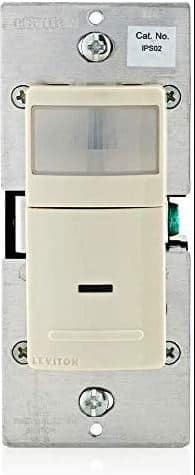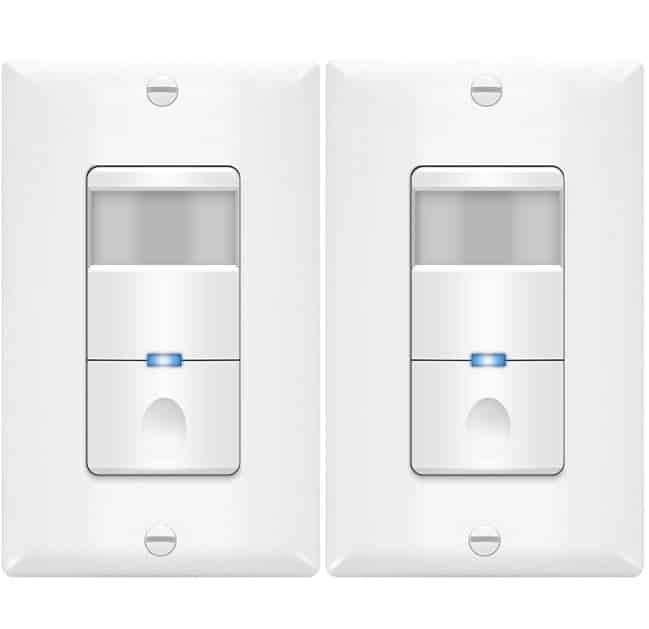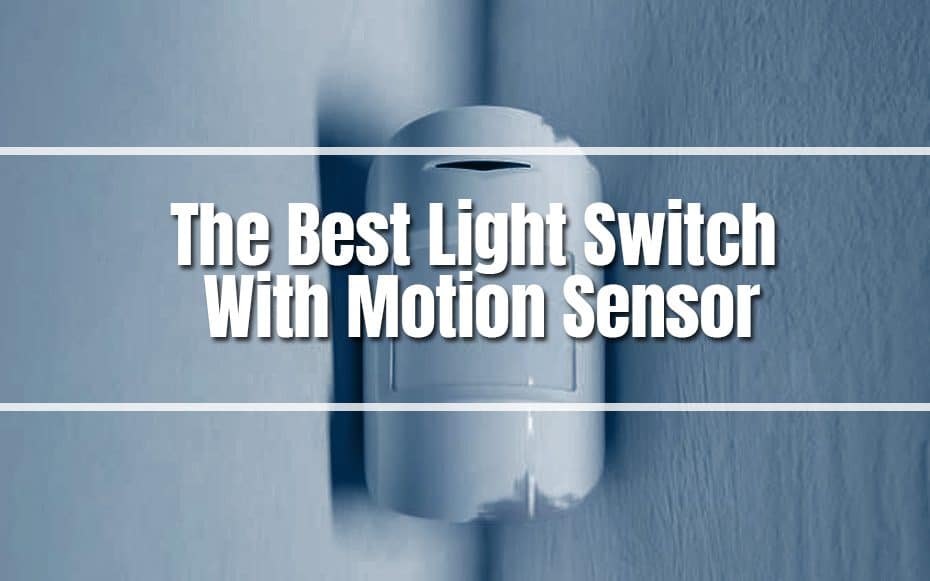A motion sensor light switch is an ideal solution for unoccupied rooms that constantly appear to be illuminated – although nobody is in them – for people who fail to turn off the lights.
Motion sensor light switches detect movement or body heat and turn on the light when someone enters and off when they leave. Therefore, let’s look at some of the best light switch motion sensors that may create wonderful, smart home settings.
Leviton IPS02

The adaptability of this Leviton motion detector light switch is among its best characteristics. When in occupancy mode, the switch will switch on the light when it detects motion; when in vacancy mode, the user must manually turn it on. This function conserves energy by turning off the lights when natural sunlight is adequate.
The auto-off feature’s time delay can also be programmed from 30 seconds to 30 minutes. This switch is suitable for larger areas due to its 180-degree field of sight and capacity to cover up to 900 square feet. It is available in white, brown, gray, and almond colors and is functional with light fixtures that link to a single light switch.
Lutron Maestro Motion Sensor Switch

A faulty motion sensor light alternately leaves someone in the dark or illuminates an empty room. The superior motion sensor technology Lutron uses distinguishes this switch from most of the competition. Its XCT sensing technology is sufficiently sensitive to recognize minor movements like typing at a desk or reading. The switch can also detect ambient lighting, which can assist save energy if there is adequate natural light in the area.
Another intelligent feature is a programmable time-out function that switches off the lights after 1, 5, 15, or 30 minutes of no motion in the room. This switch has a streamlined appearance and is available in 25 finishes, making it simple to fit the design of almost any area. Because the Maestro Sensor Switch is a single-pole device, it is only suitable for light fixtures that use a single switch.
TOPGREENER PIR Motion Sensor with Dimmer Light Switch

This motion sensor light switch from TOPGREENER is suitable for areas with chandeliers and other big fixtures, including kitchens and dining rooms, due to its incorporated dimmer and connectivity with light fixtures with numerous switches.
The switch works similarly to other infrared sensor switches in that it uses body temperature to trigger the lights to turn on and off after a predetermined time, ranging from 15 seconds to 30 minutes. A paddle-style switch with handy LED pointers lets the user quickly lower the light settings. When the switch is turned on and off, the lights neatly stay at that level. With a coverage area of 1,200 square feet, this switch is also perfectly suited for larger spaces. It is available in white.
What Factors Should Be Considered When Purchasing the Best Motion Sensor Light Switch
While a motion sensor light switch turns on or off the lights in a room, there are many elements to consider when looking for one. Below, discover the two unique types, the distinction between active and passive sensors, and other essential elements of these smart home gadgets.
Occupancy and Vacancy
Occupancy and vacancy motion sensor light switches are available, with many serving as both.
The occupancy light switches to turn on the light when someone arrives in the room and then turns off after a certain amount of time. Vacancy light switches do not turn on the light when a person arrives, forcing them to do so deliberately. Conversely, vacancy light switches immediately turn off the light when a specified amount of time has passed.
Whereas vacant light switches are less handy, they are much more energy efficient since the user may not require illumination when there is sufficient natural light from outside. In contrast, unless they incorporate a light sensor, occupancy light switches will turn on the light despite the brightness level in the area.
Active and Passive Sensor
Motion sensor light switches employ one of two sensors: passive or active, to detect occupancy in a room.
An active sensor emits sound waves reflected by the switch by persons and objects in the room. If the incoming waves detect a shift in the pattern of the objects in the room, indicating that somebody has entered or is roaming in the room, the sensor activates the light switch. The light is turned off if the sensor does not detect any changes after a particular period.
Furthermore, a passive sensor monitors heat emitted by humans and animals. When the sensor detects heat, it activates the switch. The switch is turned off if the system detects no body heat after a particular period. The sensor’s sensitivity allows it to overlook modest increases in heat to avoid unintentional triggering from sunlight.
Light Bulb Compatibility
Motion sensor light switches can manage a substantial amount of wattage. The majority have a power rating of up to 500 watts for incandescent bulbs and 250 watts for LED and CFL bulbs, which is significantly more than the capacity of any single light bulb. Whether the switch controls a light fixture with many light bulbs is an important aspect to consider. A higher efficiency than 360 watts light switch would be required for a kitchen light fixture that employs six 60-watt incandescent bulbs, for instance.
Wiring and Installation
Replacing a regular light switch with a motion sensor light switch is a venture that most DIYers can perform in less than 30 minutes if basic safety precautions are taken. No special equipment is required, but it’s a good idea to buy a voltage detector — an affordable piece of equipment that determines whether a wire is live — for security.
Many light switch installations require a regular Phillips head and a flathead screwdriver. Single-pole light switches are made up of two wires and one ground wire. A hot wire connected to one of the switch’s terminals originates from the home’s power supply. The other terminal is connected with a second cable that connects to the lighting system. A copper wire that functions as the grounding wire leads to a third terminal, which protects the power bulb from shorting out when there is a power surge.
